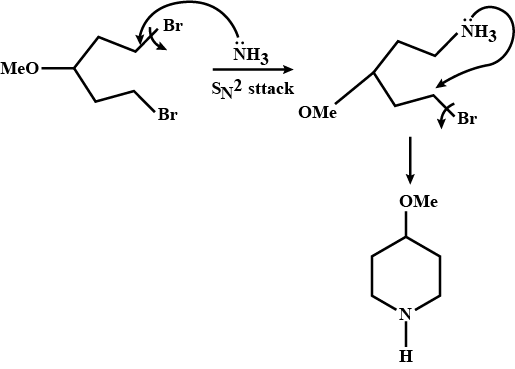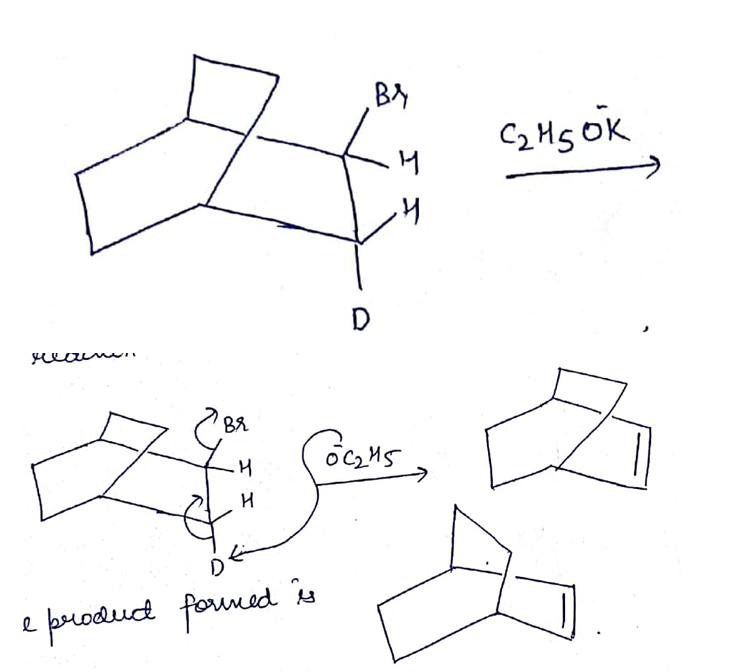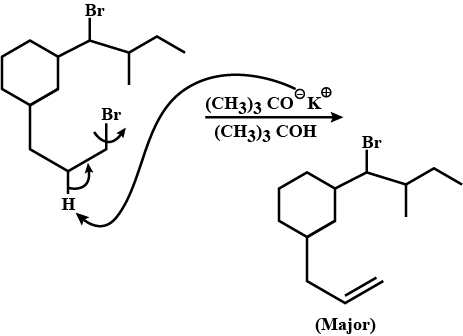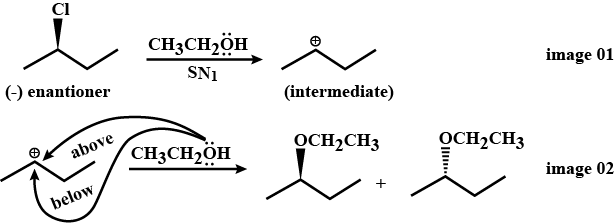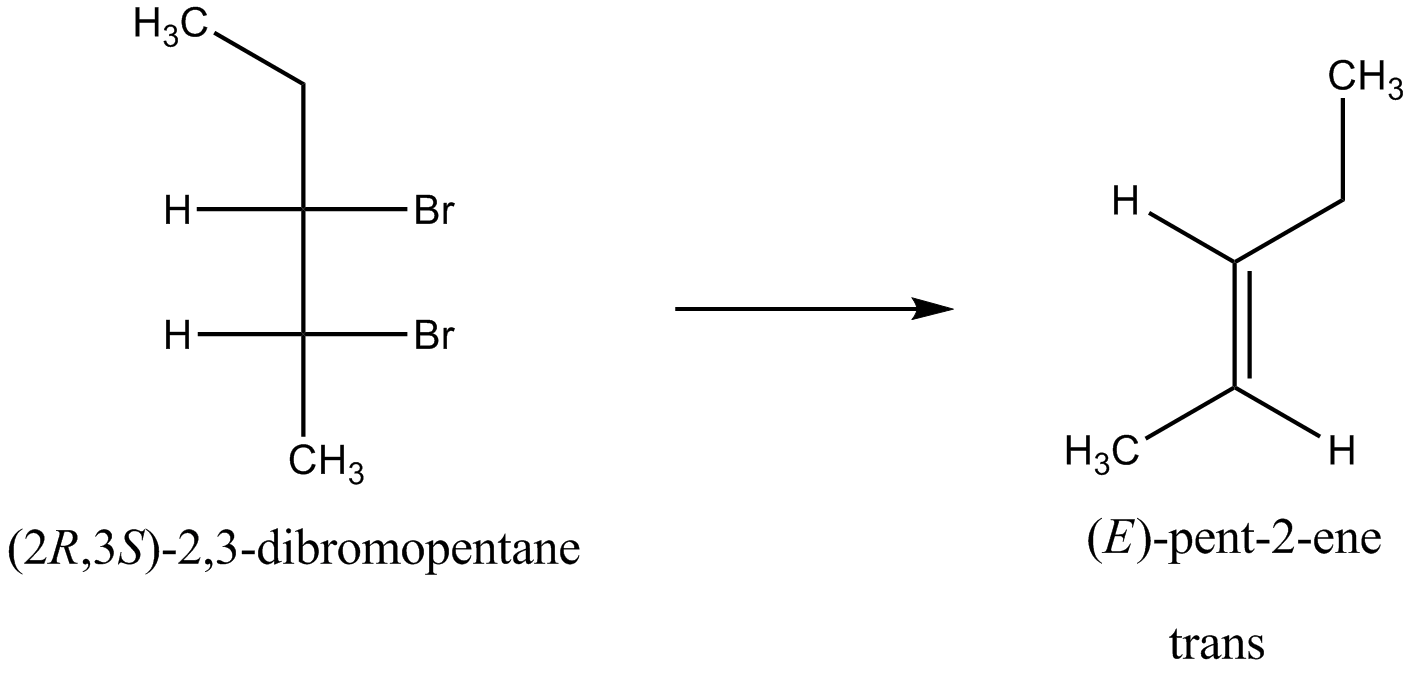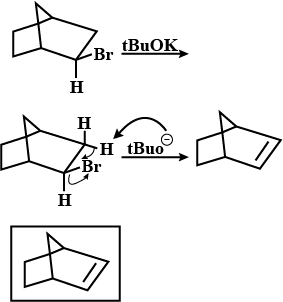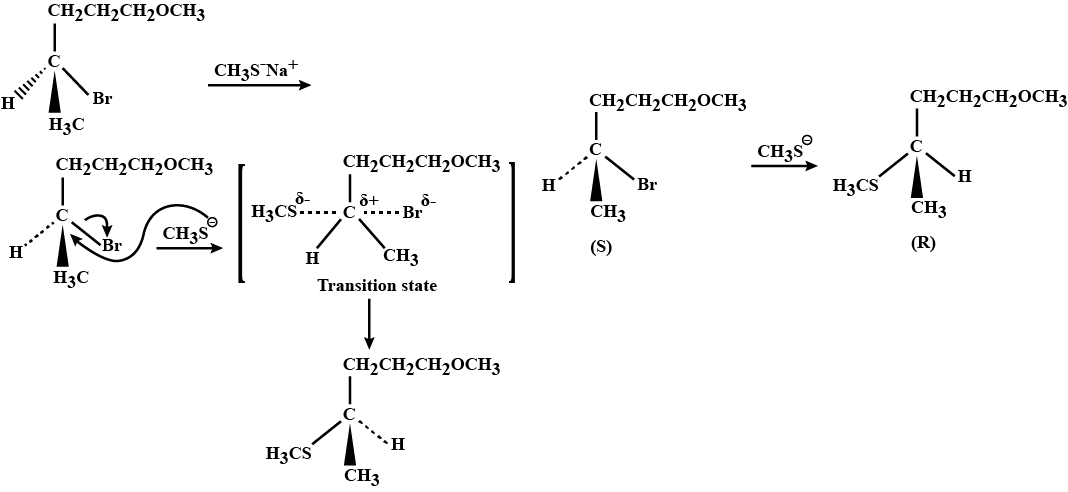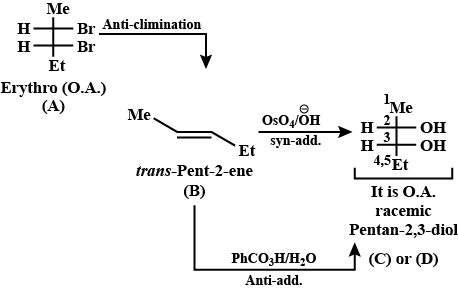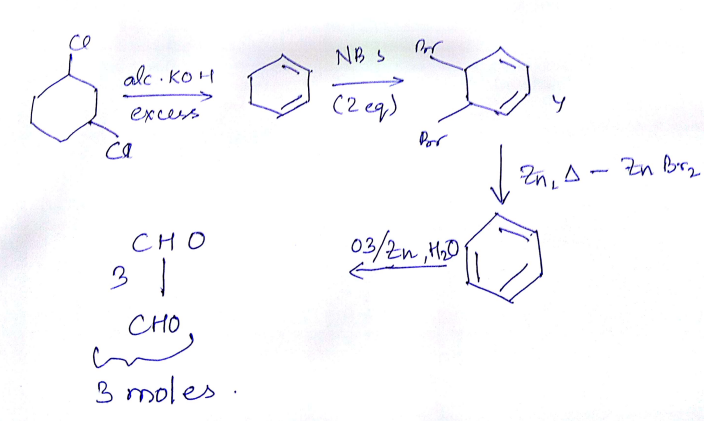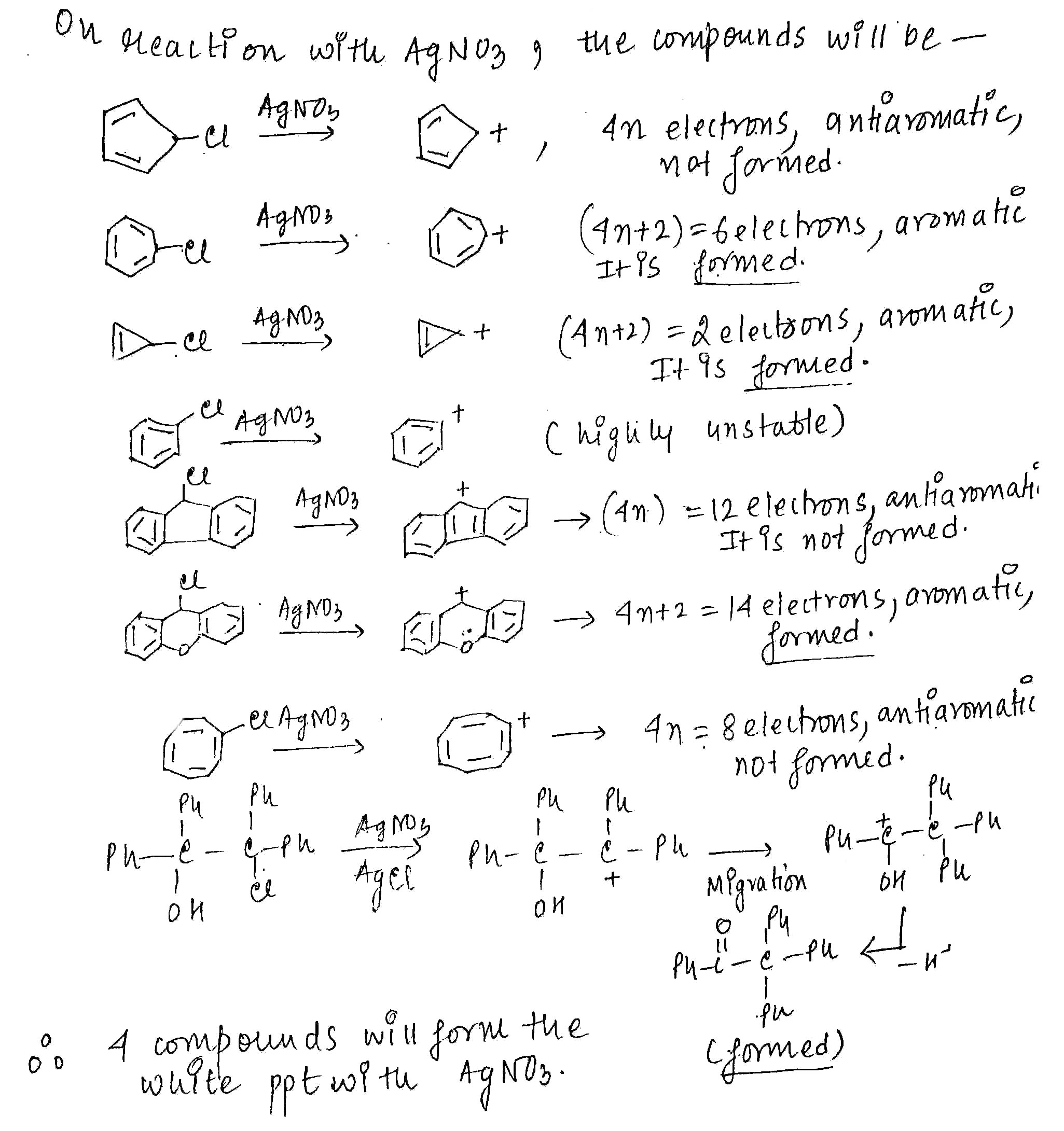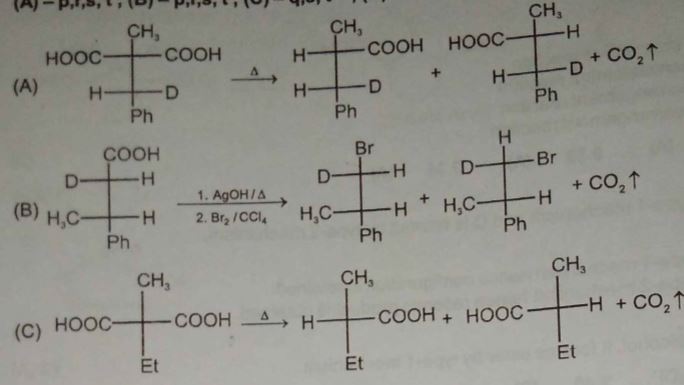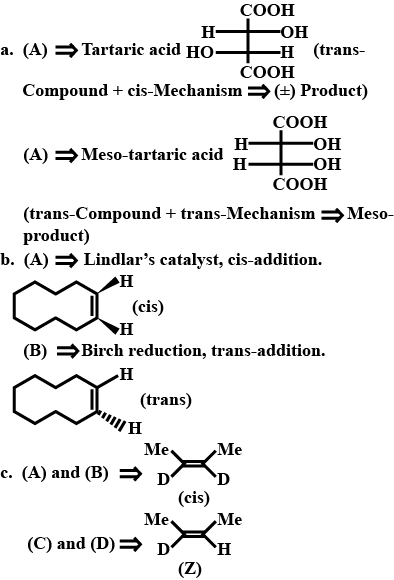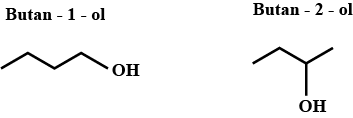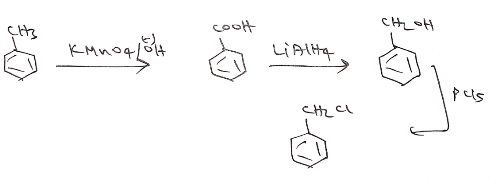Haloalkanes And Haloarenes - Class 12 Medical Chemistry - Extra Questions
Draw a structural formula for the product of each $${ S }{ N }_1$$ reaction. Where the configuration of the starting material is given, show the configuration of the product.
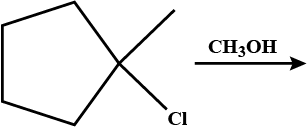
Draw a structural formula for the product of each $${ S }{ N }_1$$ reaction. Where configuration of the starting material is given, show the configuration of the product.
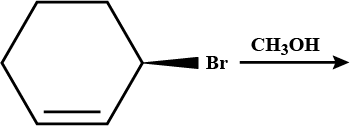
Draw a structural formula for the product of each $${ S }{ N }_1$$ reaction. Where configuration of the starting material is given, show the configuration of the product.
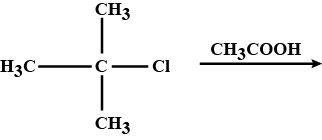
If true enter 1, else enter 0.
Major elimination product if the given compounds is heated with strong base is Cyclopentene.
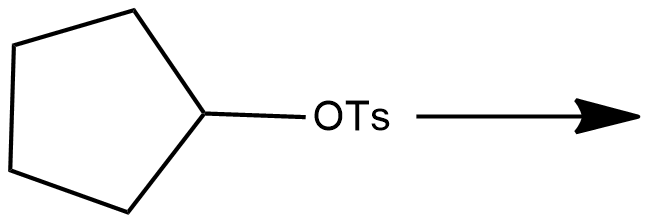
Predict product in the given reaction.
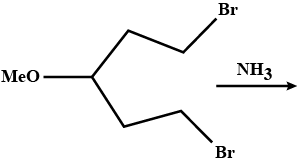
If true enter 1, else enter 0.
Major elimination product if the given compounds is heated with strong base is $${ C }_{ 2 }{ H }_{ 5 }-CH=CH-{ CH }_{ 3 }(trans)$$.

If true enter 1, else enter 0.
Major elimination product if the given compounds is heated with strong base is $${ CH }_{ 3 }-CH=CH-COOH(trans)$$.

Predict substitution/elimination products that might be obtained when each of the given alkyl halides are treated with $${ CH }_{ 3 }ONa$$ in ethanol. Include stereochemistry where appropriate.
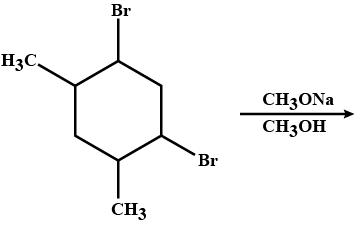
Predict the product from an $$E_2$$ reaction of the given compoound.
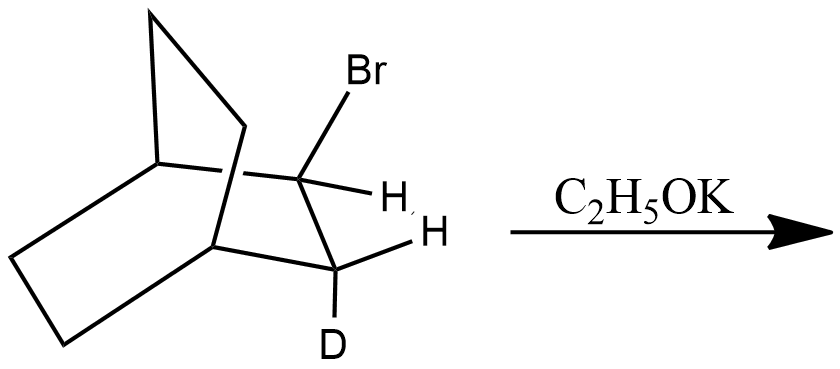
Predict product for the given reaction.
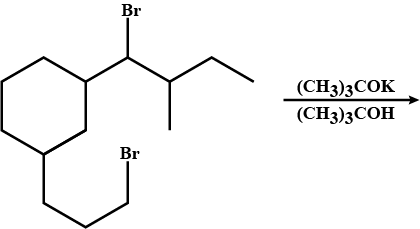
Predict the principal product in given reaction.

Explain $${S}_{N}1$$ and $${S}_{N}2$$ reactions.
Most important chemical reactions of halo alkanes are their substitution reactions.
(i) What is $$S_N1$$ reaction?
(ii) Arrange the four isomeric bromo butanes in the increasing order of their reactivity towards $$S_N1$$ reaction.
What is the name of the following reaction?

Comment on the pair of structure given above.
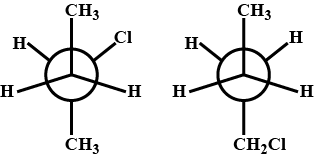
How willl you effect following two-step conversions?
(I) Methane into ethane
(II) Methyl bromide into ethyl bromide
(III) Acetylene into nitroethane
How will you convert the following ?
Chlorobenzene to D.D.T.
What is the final product in each reaction?

$$ (\pm ) $$ 2-Butanol is optically inactive. Why?
Draw a structural formula for the product of each $${ S }_{ N }1$$ reaction. Where configuration of the starting material is given, show the configuration of the product.
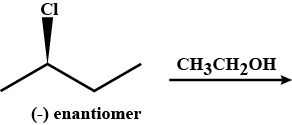
What is the product of the following reaction?
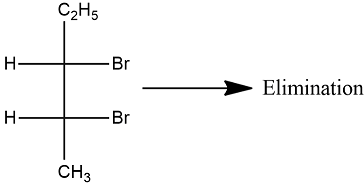
Predict the major alkene formed in the given reaction giving mechanistic reasoning.
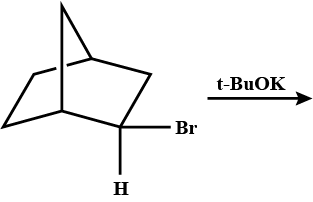
Give the stereochemical structures of B and C.$$\begin{matrix}Erythro- & & & & \\ 2, 3 - dibromobutane & \xrightarrow{Nal / Acetone} & (B) & \xrightarrow[KMnO_4]{Cold\ alk.} & (C) \\ (A) \end{matrix}$$
Complete the given reaction sequence, showing the major product you expect for each stage. Also, indicate stereochemistry where possible.
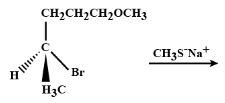
Give stereochemical structure of B and C.

Match the compounds/reactions in List I with their correct statements in List II. Matching can be one or more than one.
How many carbon atoms are present in one molecule of the end product?
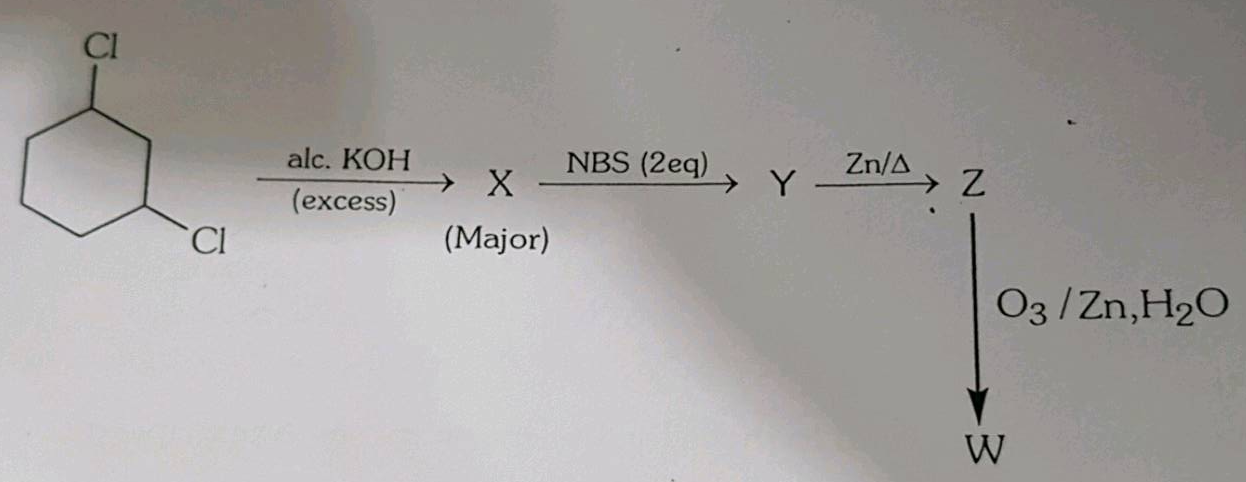
How many of the following compounds will give white precipitate with aqueous $$AgN{O_3}$$
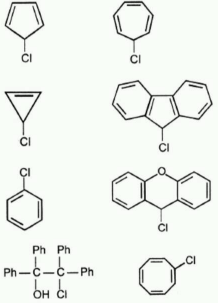
Observe the following experimentIf the reactant '$$P$$' is ethyl chloride then the product $$R$$ has the numbers of optically active compound :
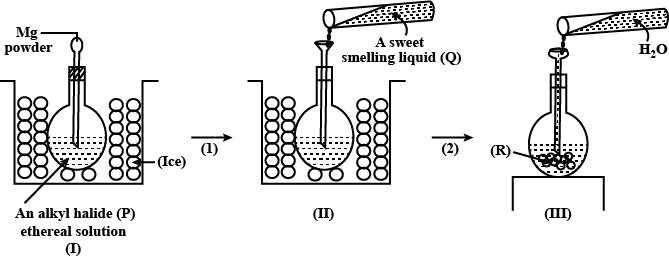
Match the column I with column II.
Give the stereochemical products of the following.
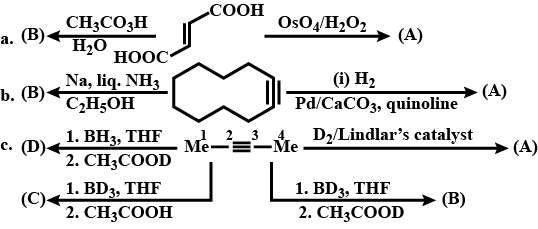
Following compounds are given to you:
2-Bromopentane , 2-Bromo-2-methylbutane , 1-Bromopentane
Write the compound which is most reactive towards $$\beta $$-elimination reaction.
How do you convert Chlorobenzene to 2-chlorotoulene?
Why is butan-1-ol optically inactive but butane-2-ol is optically active ?
Following compounds are given to you:
2-Bromopentane, 2-Bromo-2-methylbutane, 1-Bromopentane
Write the compound which is optically active.
How will you prepare the following from alkyl halide:
Isopropylbenzene.
How are the following conversions carried out ?
Toluene into benzyl chloride
Class 12 Medical Chemistry Extra Questions
- Alcohols, Phenols And Ethers Extra Questions
- Aldehydes, Ketones And Carboxylic Acids Extra Questions
- Biomolecules Extra Questions
- Chemical Kinetics Extra Questions
- Chemistry In Everyday Life Extra Questions
- Coordination Compounds Extra Questions
- Electrochemistry Extra Questions
- General Principles And Processes Of Isolation Of Elements Extra Questions
- Haloalkanes And Haloarenes Extra Questions
- Organic Compounds Containing Nitrogen Extra Questions
- Polymers Extra Questions
- Solutions Extra Questions
- Surface Chemistry Extra Questions
- The D-And F-Block Elements Extra Questions
- The P-Block Elements Extra Questions




